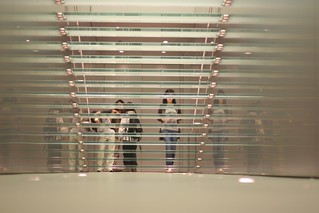Ever since Google announced the sunsetting of their Google Reader (GR) service this coming June I’ve been on a mad dash to find a replacement. I follow about 500 feeds daily and I do it from a variety of platforms and locations. Having a workable replacement that works cross-platform (Android and iOS, MacOSX and Windows), saves the list of feeds and the list of items read without regard to platform or device, and has an agreeable user interface (something like Google Reader-ish, as opposed to the magazine style that has become popular lately) before the shut down date has become important to me. Starting this task on the day following the announcement was probably foolish–there’s plenty of time for the ground to shift before the service is shut down on 1st June. I’ve looked at these services so far:
- The Old Reader
- Fever
- Tiny Tiny RSS
- Netvibes
- Newsblur
- Feedbin
- Feedly
The Old Reader is exactly what it sounds like: it has the user interface and features of an older version of GR. Thing is: it is operated by a handful of people who wanted this for themselves and a few friends, so they weren’t prepared for the onslaught when Google made their announcement. It took them two weeks (!) to import the OPML with my subscriptions, and I couldn’t wait two weeks. When my subscriptions had finally imported I used it briefly and decided it wasn’t updating quickly enough for my taste.
I could happily use Netvibes if I had to. It has two basic modes: one of these modes resembles iGoogle (so those of you who miss that can get your fix here), and one which resembles GR, only more attractive. For me this is an almost perfect solution. The two gotchas are: there seems to be a bug (at least when used with Chrome) where a full article stops scrolling down after two screens-full and it doesn’t update as often as I’d like. The mobile client is also web-based and looks and works just fine!
I thought the idea behind Fever was interesting. Fever costs $30 (non-refundable–you get the source code because it’s written in PHP, so once you take delivery the cat is out of the bag). This is a fully-featured aggregator that you host on your own environment. For many people this is a deal-breaker, but it wasn’t for me. I found the idea to be mildly attractive: I’d have more control over many parameters of my experience, including how often updates to feeds were retrieved. Unfortunately, I have shared hosting and one of the parties with whom I was sharing was being unneighborly and this poor behavior made my Fever instance run poorly. There’s another problem with my shared hosting provider which is preventing Fever from getting updates consistently. On the other hand, it is super easy to set up (even if you don’t have experience with installing these kinds of things). The web interface works fine for me on both Chrome (any platform), but I didn’t like the “Sparks” and “Kindling” nonsense, and feeds which I had not incorporated into a group weren’t as easily accessible as those which were set up with groups.
Because my own shared hosting seemed to be not quite up to the task I haven’t yet evaluated Tiny Tiny RSS, which is another self-hosted solution. There is an article at Lifehacker which gets into details about setting up Tiny Tiny RSS and I’m sure I’ll check this out in the future. The Tiny Tiny folks claim to not support users on shared hosting, but the Lifehacker article claims to have set up on shared hosting just fine. The appeal of having a solution over which I have more control is undeniable, even if it costs me a bit of time and money.
Newsblur looks like it could be a contender, too. I didn’t spend much time with it because their “free trial” is basically a cost-free account on which you can read something like six feeds, and that doesn’t really come close to approximating what I want to do. After plunking down a modest amount of money for Fever I didn’t want to find myself buying into every possible trial situation just to find a reader I liked.
Feedbin is intriguing. Yet another one-man show, but one that seems to have his act in gear. The user interface (at least on the web version) seems to be appealing, and there are several clients for iOS along with one for Android. I haven’t tried this yet but I will give it a shot just because I get a good, professional vibe from the service’s blog. There’s a lot of under-promising and over-delivering, and I hope that my use of this service bears this out. $2/month or $20/year … not a bad deal.
And then … I heard that Feedly (a reader which many love but which I avoided because they were primarily a magazine-view reader) now had an option for GR-style reading, so I tried it … since the back end is still dependent on Google Reader it’s not clear how performance will change once GR is out of the picture but I could live with this if I had to. I’d like to cram more stuff onto a page, and I haven’t figured out certain keyboard shortcuts (like “show me the next *new* article”) yet, but it does what is expected and is nearly as speedy as GR so I’m ok for the moment … but as 1st June approaches there should be more readers out there and I may have gotten around to evaluating those listed above which I haven’t yet checked out.
So, at the moment, I’m using Feedly … but I’m not loving it. I plan to revisit this shortly after Google pulls the plug on Reader to see if the landscape is better …





